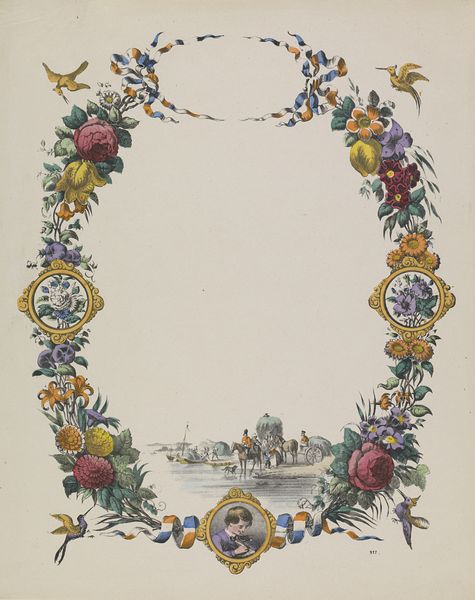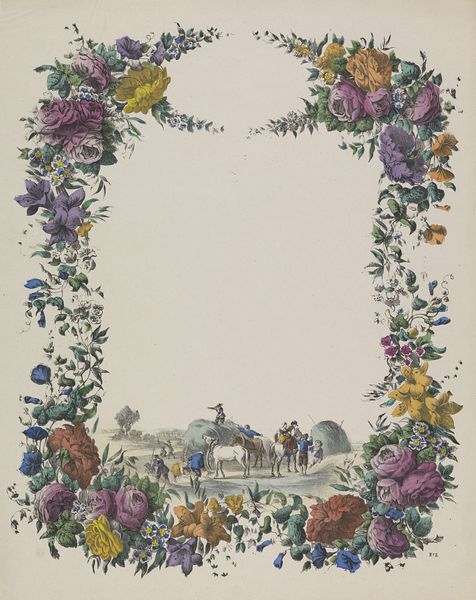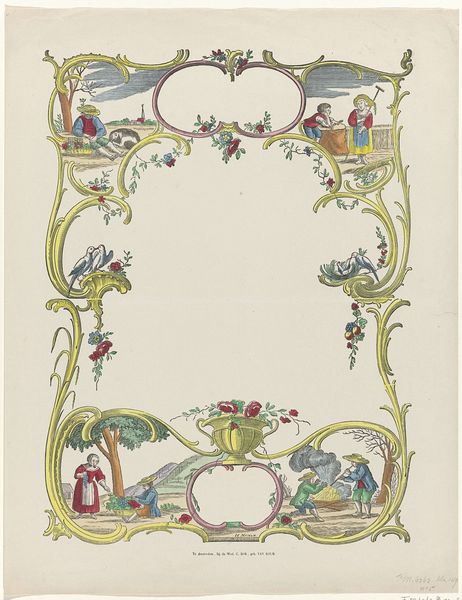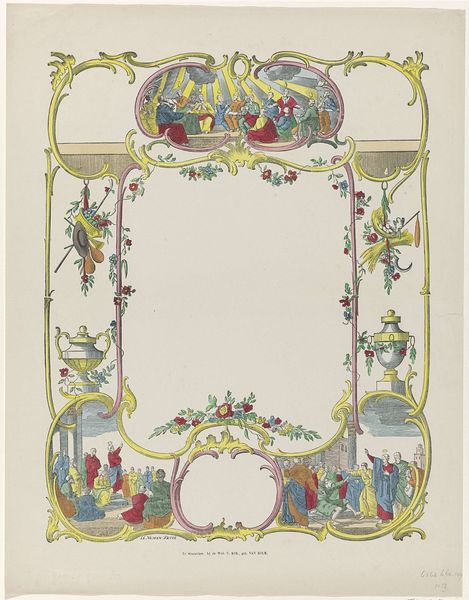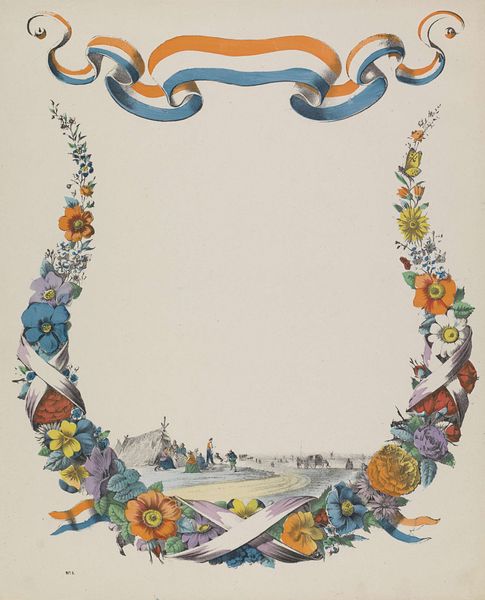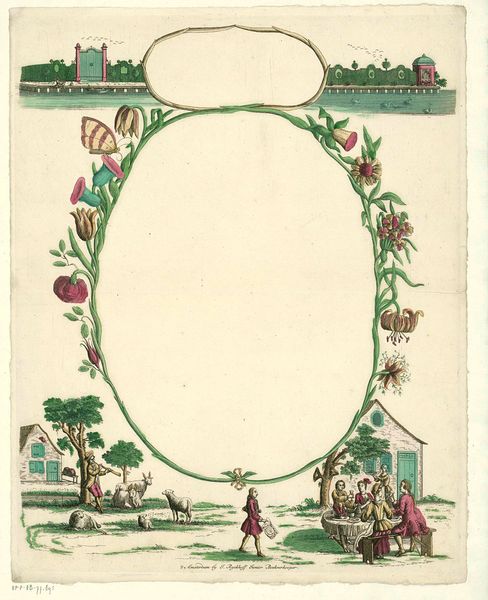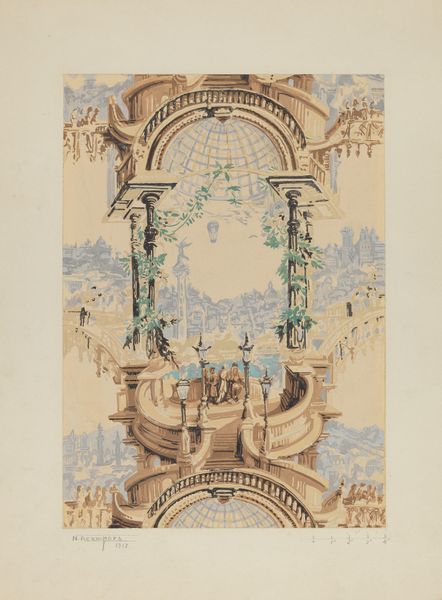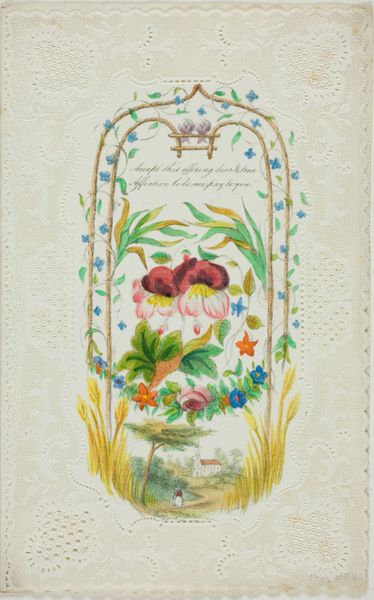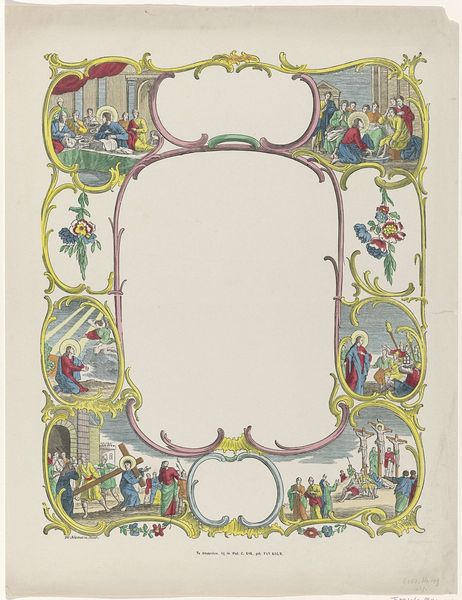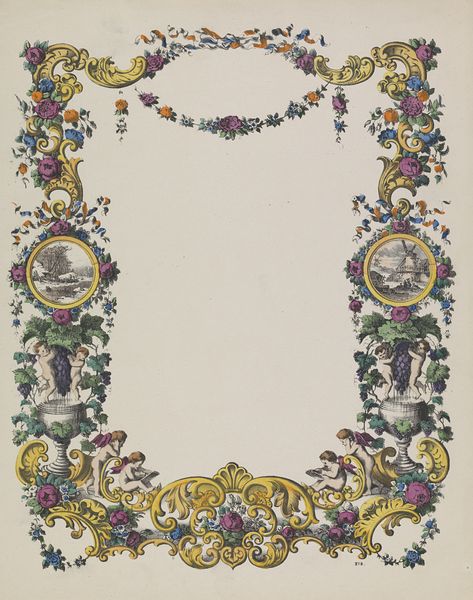
Wensbrief met bloemenkrans en landschap met boerderij en dieren 1829 - 1880
0:00
0:00
firmajosephscholz
Rijksmuseum
Dimensions: height 430 mm, width 335 mm
Copyright: Rijks Museum: Open Domain
Editor: So, this is "Wensbrief met bloemenkrans en landschap met boerderij en dieren," made sometime between 1829 and 1880 by firma Joseph Scholz. It's a watercolor painting. The combination of the detailed floral border with a quaint countryside scene makes it feel like a heartfelt greeting. What stands out to you about its place in history? Curator: What intrigues me is the context of its creation. It’s firmly within the Romanticism movement, which idealized nature and emphasized emotion. Consider how this “wensbrief,” or wish letter, functioned socially. Before widespread postal services and mass-produced cards, such personalized artworks were precious commodities. Editor: A precious commodity indeed! I hadn't considered how rare something like this would have been. Curator: Precisely. Now, think about who would be commissioning and receiving such a letter. These personalized pieces likely circulated within a particular social class, reinforcing connections through shared values and aesthetic preferences. Does that change your view of it? Editor: Definitely! Knowing it was a way for a certain social group to connect adds another layer to understanding its intent. It's not just about the personal message, but also about belonging. I initially focused on the beautiful details but now it also makes me wonder about the networks in which this object circulated. Curator: Exactly. And consider the idealized landscape. It presents a vision of rural life that’s likely more picturesque than realistic. The “boerderij,” or farm, is harmonious. Editor: Now that you mention it, it almost feels like a stage set, idyllic. It does highlight the tension between nature and society inherent in the era’s imagery. Thanks, I see it now.
Comments
No comments
Be the first to comment and join the conversation on the ultimate creative platform.
